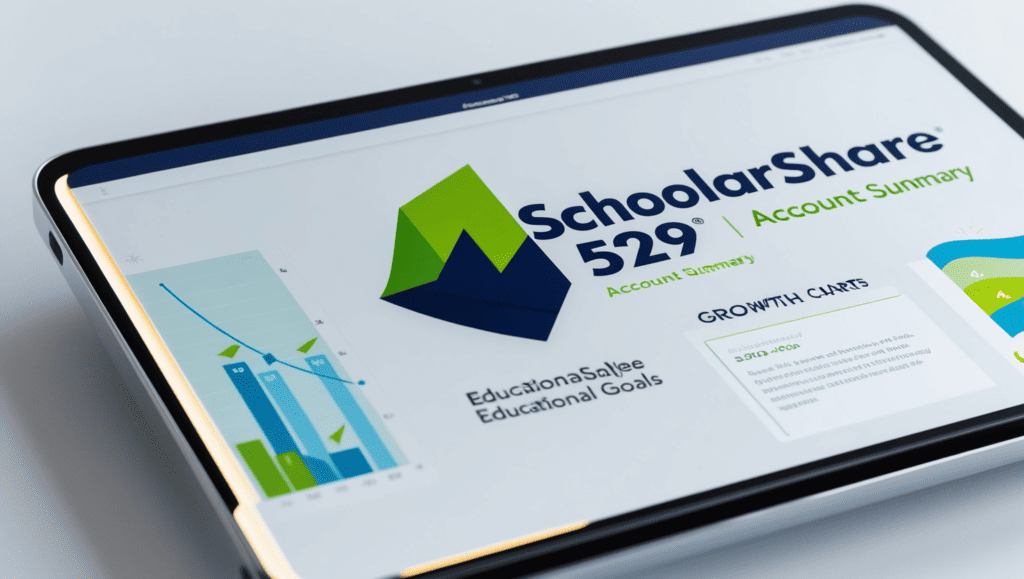The 529 plan is a widely used savings tool for families planning to cover educational expenses. It offers significant federal tax advantages, making it a popular choice. However, each state applies its own rules, and the California 529 Plan has unique provisions that stand out.
California does not provide a tax deduction for contributions to a 529 plan. Despite this, the plan allows for tax-free growth of earnings. Families can also make federal tax-free withdrawals for qualified educational expenses like tuition, books, and supplies. Residents may choose the ScholarShare 529 plan, California’s state-specific option. However, they won’t gain any state-level tax breaks from it.
Although federal law permits up to $10,000 in annual withdrawals for K-12 tuition, California imposes state taxes on such distributions. Without state tax incentives, some families explore 529 plans from other states. Still, California residents will not receive additional state tax benefits for out-of-state plans.
Despite these nuances, the California 529 Plan remains a flexible and effective tool for long-term education savings. To learn more, visit the IRS 529 Plan Overview.
What Is a 529 Plan and How Does It Work in California?
A 529 plan is a specialized savings account designed to help families save for education expenses. These plans are named after Section 529 of the Internal Revenue Code, which governs them. The primary goal of a 529 plan is to offer tax advantages while providing a flexible way to save for education. Contributions to the account grow tax-free, and withdrawals for qualified educational expenses are exempt from federal taxes. This makes 529 plans a powerful tool for long-term education savings.
California residents can invest in the state’s ScholarShare 529 Plan, which is California’s official 529 savings program. This plan offers a variety of investment options tailored to meet different risk tolerances and savings goals. Families can choose from age-based portfolios that adjust automatically as the beneficiary gets closer to college or other individual options like equity or bond funds. ScholarShare also provides user-friendly tools and resources to help families plan their education savings effectively. However, it’s important to note that California does not provide a state income tax deduction for contributions to the ScholarShare plan, which differentiates it from some other states’ 529 plans.
The federal tax benefits of the California 529 Plan remain a significant advantage for residents. Investments in the plan grow without being subject to federal income tax, which allows for compound growth over time. When the funds are used for qualified educational expenses, such as tuition, books, supplies, and room and board, withdrawals are completely exempt from federal taxes. This ensures that families can maximize their savings to cover the ever-rising costs of higher education. For more details on how 529 plans work, you can visit the IRS’s official page on 529 plans.
Families in California should carefully evaluate the ScholarShare 529 Plan and its features. Although the state does not offer additional tax breaks, the combination of federal tax-free growth and the wide range of investment options makes it an excellent choice for saving for educational expenses.

Tax Treatment of 529 Plans in California
No State Income Tax Deductions for Contributions
Unlike many other states, California does not offer a state income tax deduction or credit for contributions to a 529 plan. This means families cannot reduce their taxable income when saving for education through a California 529 Plan. Despite this, the federal tax benefits remain significant, allowing tax-free growth on investments and tax-free withdrawals for qualified educational expenses.
Comparison with States Offering Tax Breaks
States like New York and Virginia provide state tax deductions for contributions to 529 plans. This benefit incentivizes residents to save by offering immediate tax relief. In contrast, California residents saving with the ScholarShare 529 Plan miss out on these state-level perks. However, families can still take advantage of the robust federal tax benefits that make the California 529 Plan a strong option for long-term educational savings.
Tax Implications for K-12 Tuition Withdrawals
Federal law allows families to use 529 plan funds for up to $10,000 in K-12 tuition expenses per year, tax-free. However, California treats these withdrawals differently. While federally tax-free, such distributions are subject to state income taxes in California. This distinction can lead to unexpected tax bills for families using their California 529 Plan for private K-12 education. Consulting a tax advisor can help clarify these implications and assist in making informed decisions about withdrawals.
For more details on the ScholarShare 529 Plan and how it compares to other state plans, visit ScholarShare 529. Learn about tax advantages in other states at Saving for College.

Contribution Limits and Gift Tax Considerations
Maximum Account Balance for California 529 Plans
California 529 plans, like the ScholarShare plan, do not have annual contribution limits. Instead, they have a maximum account balance. This balance is currently set at around $529,000 per beneficiary. Once the account reaches this limit, no further contributions can be made to that specific plan for the beneficiary. It’s important to note that this cap is applied to the combined value of all 529 accounts held for a single beneficiary. The goal is to ensure that the plan can cover educational expenses without growing too large. The maximum balance provides families with plenty of room to accumulate savings over time for their children’s education.
Gift Tax Exclusions and the “Front-Loading” Option
While there is no annual contribution limit, 529 plan contributions may be subject to federal gift tax rules. The IRS allows individuals to gift up to $17,000 per year per beneficiary without incurring gift taxes. This means that you can contribute $17,000 annually to a 529 plan for each child or beneficiary. However, if you plan to contribute more, the IRS offers a strategy known as “front-loading.” This allows you to contribute up to $85,000 in a single year per beneficiary, as long as you elect to treat it as if it were spread over five years. This strategy can be especially useful for grandparents or parents who want to make large contributions early in a child’s life and take full advantage of the gift tax exclusion.
Maximizing Contributions Without Exceeding Thresholds
To maximize contributions to a California 529 plan without triggering gift taxes, it’s crucial to plan carefully. Start by contributing the annual gift tax exclusion amount of $17,000 each year. If you wish to contribute more, consider using the front-loading strategy to reach the $85,000 limit. Just remember that if your contributions exceed these thresholds, gift taxes may apply. It’s a good idea to review your total contributions annually and consult with a financial advisor to ensure you stay within IRS limits. This careful planning can help you make the most of your 529 plan, enabling you to build a substantial education savings fund while avoiding unnecessary tax liabilities.
For more details on California’s ScholarShare 529 plan and tax rules, visit ScholarShare 529.

Using 529 Plans for Financial Aid and Flexibility
Impact of 529 Plans as Parental Assets on Financial Aid Eligibility
When it comes to financial aid, the assets in a 529 plan are treated as parental assets. This is an important distinction because parental assets are assessed at a lower rate than student assets. In most cases, only a small percentage of these assets is factored into the financial aid calculation. This treatment helps reduce the potential impact on need-based financial aid eligibility. For example, if a parent has $10,000 in a 529 plan, it may only affect the financial aid calculation by $500 or less. This can make a significant difference in the amount of aid a student may qualify for.
It’s essential for families to understand that funds in a 529 plan do not count as income when applying for financial aid. Withdrawals from the 529 plan to cover qualified educational expenses, such as tuition, books, and room and board, are not considered income for future aid calculations. This can help maintain financial aid eligibility in subsequent years.
Treatment of Qualified Withdrawals for Tuition, Room and Board, and Supplies
529 plans offer tax-free withdrawals when funds are used for qualified educational expenses. These expenses include tuition, room and board, books, and necessary supplies at eligible institutions. For students attending college or other post-secondary schools, 529 withdrawals can be used to pay for many costs associated with their education.
It’s important to note that there are some exceptions. For instance, transportation costs, such as commuting expenses or gas, are generally not eligible for tax-free withdrawals. To avoid penalties or unexpected taxes, families should make sure that funds are used only for qualified expenses. Understanding the rules around these withdrawals is key to maximizing the benefits of a California 529 plan.
Flexibility to Transfer Unused 529 Funds to Another Family Member
One of the greatest advantages of a 529 plan is its flexibility when it comes to transferring unused funds. If the original beneficiary does not use all the funds—for example, if they receive scholarships or decide not to attend college—the account holder can transfer the balance to another family member. This transfer option ensures that the savings are not wasted and can continue to grow tax-free until the new beneficiary uses them for education-related expenses.
The transfer can be made to any eligible family member, including siblings, parents, or even cousins. This flexibility is especially helpful for families with multiple children or those with extended family members pursuing higher education. By transferring the unused funds, the family avoids withdrawal penalties and continues to benefit from tax-free growth.
For families in California, the ability to transfer unused 529 funds within the family can be a valuable tool for long-term education savings. It helps ensure that the investment in a 529 plan benefits the entire family, even if the original beneficiary does not fully utilize the account.

Choosing the Right 529 Plan for California Residents
When selecting a 529 plan, California residents have two main options: the ScholarShare 529 and out-of-state plans. Both options offer valuable benefits, but it’s important to understand the differences and consider which is the best fit for your financial goals.
Benefits of the ScholarShare 529 vs. Out-of-State Plans
The ScholarShare 529 Plan is California’s state-sponsored plan. While it doesn’t offer a state income tax deduction, it does provide tax-free growth and withdrawals for qualified educational expenses. On the other hand, out-of-state plans may offer tax deductions or credits for contributions, depending on the state. However, California residents won’t benefit from those state-level tax advantages because California does not recognize tax benefits from out-of-state plans. Despite this, out-of-state plans may offer more investment options or lower fees.
Factors to Consider: Fees, Investment Options, and Administrative Rules
When choosing a 529 plan, it’s essential to examine the fees, investment options, and administrative rules of both California’s ScholarShare 529 and out-of-state plans. Fees can vary significantly, and higher fees can eat into your long-term investment growth. Both in-state and out-of-state plans offer a variety of investment choices, ranging from age-based portfolios to individual fund selections. Make sure the plan offers options that align with your investment strategy. Additionally, each plan has different rules regarding withdrawals, transfers, and account management. It’s vital to review these administrative rules to avoid surprises in the future.
Importance of Consulting a Financial Advisor for Personalized Strategies
Choosing the right 529 plan can be complex, especially with various tax rules and investment strategies to consider. A financial advisor can provide personalized guidance tailored to your family’s specific needs. They can help you understand the long-term tax advantages, explain how different plans affect your financial aid eligibility, and ensure you’re making the most of your contributions. A good advisor will also help you balance your 529 plan with other savings goals, ensuring a comprehensive approach to your financial future. Consulting a professional ensures you select the plan that best aligns with your unique situation and goals.
Conclusion
While California does not offer state-level tax incentives for 529 plan contributions, the federal tax advantages still make these plans a valuable tool for education savings. Contributions grow tax-free, and withdrawals used for qualified educational expenses, such as tuition, room, and board, are exempt from federal taxes. This tax-free growth over time is a significant benefit, especially for families looking to save for future educational needs.
Even without the state tax break, the California 529 Plan remains a strong option for long-term savings. It allows families to accumulate funds for education while benefiting from flexible withdrawal options. The flexibility to transfer unused funds to other family members also adds value, ensuring that no savings go to waste.
To make the most of your 529 plan, it’s crucial to evaluate your savings goals and consult a financial advisor. A professional can help you choose the right strategy based on your financial situation and educational needs. Families should regularly review their plans to ensure they are maximizing their potential.
